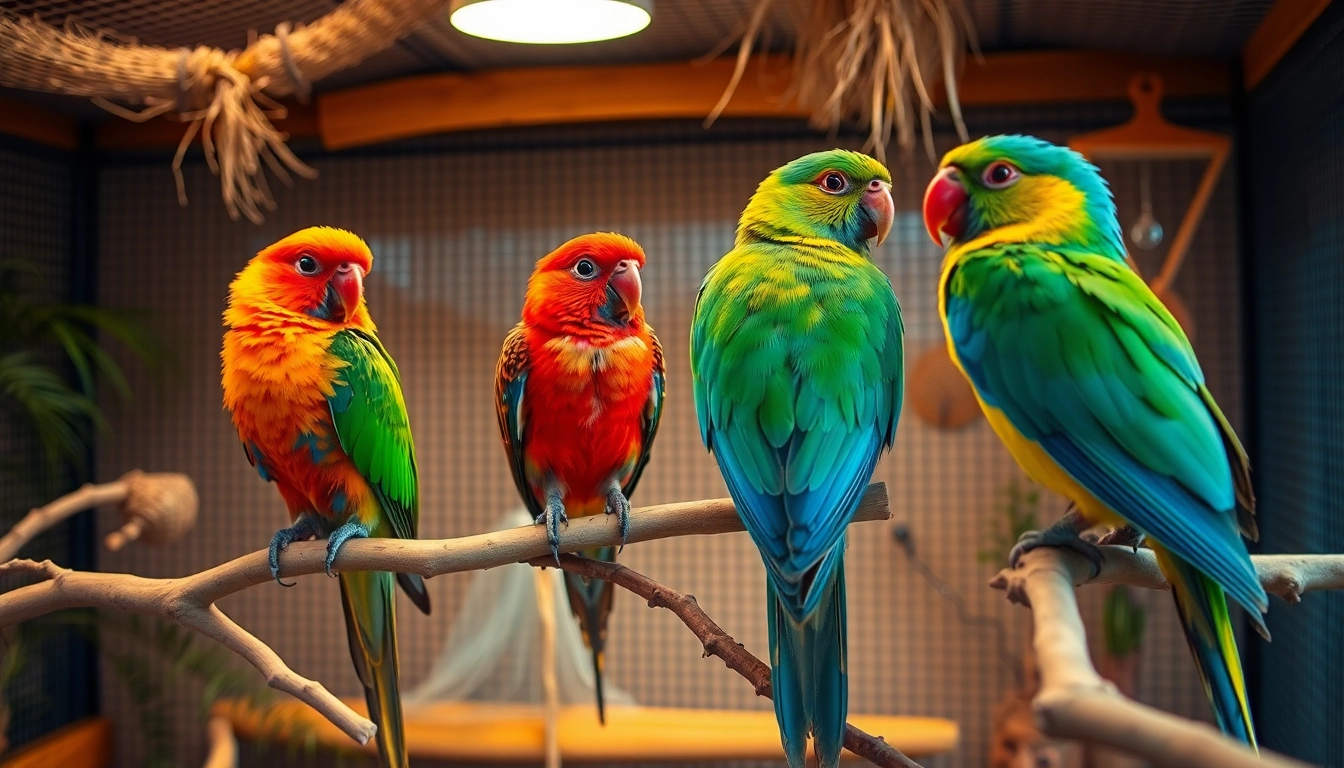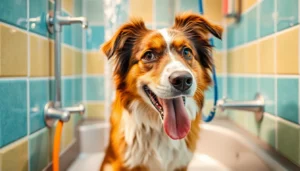Understanding Different Types of Pet Birds
Choosing the right pet bird begins with understanding the diverse range of species available, each with unique characteristics, care requirements, and temperaments. Whether you’re a novice or an avid avian enthusiast, selecting the appropriate species ensures a rewarding and sustainable companionship. This comprehensive guide will explore popular species suited for beginners, vibrant and social bird choices for active owners, and rare breeds for dedicated bird lovers, helping you make an informed decision tailored to your lifestyle and interests.
Popular Species for Beginners
When starting your journey into bird ownership, it’s essential to select species known for their manageable care routines, friendly behavior, and resilience. Parakeets, also known as budgerigars, top the list due to their adaptability, affordability, and affectionate nature. They typically live around 6 to 8 years but can reach up to 18 years with proper care. Budgies are highly social, enjoy interactive play, and are relatively easy to train, making them perfect for first-time owners.
Another excellent beginner choice is the cockatiel. Originating from Australia, cockatiels are known for their charming crests and friendly demeanor. They tend to have a lifespan of approximately 15 to 20 years and require a simple diet rich in seeds, vegetables, and occasional fruits. Their playful and affectionate personalities make them a favorite among novice bird owners.
Canaries and finches also serve as suitable starter birds. Canaries are valued for their melodious singing and low-maintenance setup, while finches are social and thrive in pairs or colonies. Both species require minimal handling, making them ideal for those interested in bird watching and enjoying vibrant avian displays without extensive interaction.
Choosing the right beginner bird involves considering factors such as lifespan, temperament, and density of care. It’s vital to remember that even “easy” species require consistent attention, proper diet, and a stimulating environment to thrive. For more detailed insight on beginner-friendly pet birds, you can visit pet birds and discover tailored advice from avian experts.
Bright and Social Bird Choices
For owners seeking lively, engaging, and sociable companions, colorful species like lovebirds, parrotlets, and conures provide endless entertainment. Lovebirds, small parrots native to Africa, are renowned for their strong pair bonds and playful behavior. They typically live 10 to 15 years and require daily interaction to prevent loneliness and behavioral issues.
Parrotlets are tiny parrots, but their big personalities make them fascinating pets. Known for their intelligence and curiosity, they thrive in environments that offer mental stimulation and opportunities for play. Their lifespan ranges from 15 to 20 years, and they often bond closely with their owners.
Conures—especially sun, green-cheeked, and maroon-bellied species—are vibrant, noisy, and affectionate. These birds are highly social, enjoy interactive toys, and can even be taught to mimic sounds and words. Although they need regular mental and physical activity, they reward owners with playful and engaging behavior.
It’s worth noting that social, brightly colored birds generally require a substantial commitment from their owners, including daily socialization, mental stimulation, and a stimulating environment. Proper training and consistent interaction help prevent behavioral problems like biting or screaming, ensuring a harmonious relationship.
Unique and Rare Breeds for Enthusiasts
For seasoned bird enthusiasts and collectors, rare breeds offer a chance to explore the diversity of the avian world. Hyacinth macaws, the largest flying parrots, are striking with their vibrant blue plumage and impressive size. They can live over 50 years and require large, sturdy cages, specialized diet, and ample space for flight. Their intelligence and social nature demand considerable attention and enriched environments.
Other rare breeds include fiercy and captivating species like the cockatoo and rare species of amazons, which often require extensive training and socialization to manage their complex behaviors. These birds are highly intelligent, sometimes loud, and have long lifespans, making them suitable for experienced owners prepared for dedicated care.
Rare breeds can serve as stunning focal points of avian art and companionship, but they come with higher costs—both financial and emotional. Their specialized needs and long lifespans necessitate thorough research and often consultation with avian specialists before acquisition.
Key Factors in Choosing Your Pet Bird
Deciding on a pet bird involves a multifaceted evaluation of your lifestyle, preferences, and capacity for care. Beyond aesthetics and species characteristics, understanding the practical aspects ensures a lasting and joyful relationship with your avian companion.
Assessing Care Requirements and Lifespan
Different bird species have widely varying care needs and lifespans. For instance, small parrots like budgerigars typically live 6 to 8 years, while larger species like macaws can surpass 50 years with proper care. This longevity entails a long-term commitment, including financial planning, emotional readiness, and the ability to provide consistent healthcare and environment adjustments over decades.
Care requirements include diet, cage size, enrichment, social interaction, and health management. Species like canaries and finches are relatively low maintenance, requiring simpler diets and smaller cages, whereas parrots demand extensive mental stimulation, larger housing, and social engagement.
Understanding your capability to meet these needs is crucial. For example, busy professionals may prefer self-reliant birds like Poicephalus parrots, which are calm and can entertain themselves, while families with children may opt for social and gentle species like cockatiels or lovebirds.
Matching Bird Temperament with Lifestyle
Compatibility between your personality and the bird’s temperament is vital. Highly social and intelligent species such as parrots and cockatoos require significant interaction, training, and mental stimulation. Conversely, shyer or more independent breeds may be better suited for owners who prefer observing rather than extensive handling.
Assess your daily routine, household activity levels, noise tolerance, and long-term commitments before choosing a species. For instance, if you work long hours or travel frequently, selecting a bird like the Poicephalus parrot, which can be left alone, is advisable.
Take into account your living environment—apartment dwellers should consider the noise levels of certain species, while homeowners with yard space might be able to accommodate larger parrots needing flight areas.
Budget Considerations and Cost of Ownership
Owning a pet bird involves expenses beyond initial purchase costs. These include quality cages, toys, a balanced diet, regular veterinary care, and unforeseen health needs. For example, initial setup for a large parrot can range from $500 to over $2,000, depending on the cage and accessories.
Ongoing costs include nutritious food, enrichment toys, cage cleaning supplies, and veterinary visits—often annually or biannually. Larger and longer-lived species command higher expenses in both care and maintenance.
Preparing a detailed budget and understanding the financial commitment are essential steps. It is also advisable to establish an emergency fund for unexpected health issues, especially for rare and expensive breeds.
Essential Care and Maintenance for Pet Birds
Providing optimal care is the cornerstone of a happy, healthy pet bird. This includes proper diet, habitat setup, health monitoring, and enrichment activities that promote mental and physical well-being.
Proper Diet and Nutrition Strategies
Feeding your bird a balanced diet tailored to its species ensures longevity and vitality. Most bird diets should comprise a mix of high-quality pellet food, fresh vegetables, fruits, and occasional seeds. Fresh water must be available at all times, and treats should be given sparingly.
Examples of nutritious additions include leafy greens like kale and spinach, bell peppers, and berries. Avoid processed or sugary foods, which can harm avian digestive health. Consulting avian nutritionists or veterinary guides ensures your bird receives appropriate nutrients and avoids deficiencies later in life.
Supplementation with calcium sources and vitamins, especially for breeding or aging birds, further enhances their health.
Habitat Setup and Enrichment Techniques
The cage or aviary is the primary habitat for your pet, and its design influences health and happiness. A spacious cage with bars spaced appropriately for the species prevents escape and injury. Horizontal perches, toys, swings, and foraging opportunities stimulate natural behaviors like climbing, chewing, and exploring.
Rotation of toys and introducing new stimuli periodically prevents boredom and behavioral issues. Foraging toys filled with treats or seeds promote mental engagement and physical activity.
Providing access to natural sunlight or full-spectrum lighting supports vitamin D synthesis and overall vitality. Creating a safe, clean, and engaging environment is fundamental for long-term wellness.
Health Monitoring and Common Issues
Regular health checks and recognizing early signs of illness are vital. Common issues include feather plucking, respiratory problems, and nutritional deficiencies. Symptoms such as lethargy, abnormal droppings, weight loss, or abnormal behavior warrant prompt veterinary consultation.
Maintaining hygiene by cleaning cages regularly, providing fresh food and water, and ensuring proper sanitation minimizes illness risks. Establishing a relationship with an avian veterinarian experienced in bird health is advisable to ensure timely diagnosis and treatment when necessary.
Training and Socializing Your Pet Bird
Effective training and socialization foster trust and a harmonious relationship. Understanding your bird’s behavior and employing positive reinforcement techniques make handling and training rewarding experiences.
Building Trust and Handling Skills
Building trust begins with daily interaction and patience. Start with short sessions of gentle talking and offering treats to encourage your bird to approach. Avoid sudden movements or loud noises that may cause fear.
Gradually introduce handling by allowing your bird to step onto your finger or palm, praising calm behavior. Consistency and calmness reinforce positive associations and help prevent biting or aggression.
Using clicker training or target training techniques accelerates learning and encourages cooperative behavior. Ensuring a calm environment during handling sessions enhances safety and enjoyment for both parties.
Encouraging Vocalization and Interaction
Many pet birds are naturally vocal, and owners can foster this trait through regular interaction. Talking, singing, or playing recorded sounds can stimulate your bird’s vocal cords and response behaviors.
Providing toys that encourage chirping or mimicking can also enrich their vocal expression. Rewarding desired sounds with treats or praise creates positive feedback loops, fostering a more engaging and interactive environment.
Preventing Behavioral Problems
Behavioral issues such as biting, excessive screaming, or feather plucking often stem from boredom, loneliness, or lack of training. Addressing these root causes involves providing sufficient mental and physical stimulation, social interaction, and a structured routine.
Monitoring your bird’s behavior and adjusting activities accordingly helps prevent the development of problem behaviors. Avoid punishing your bird; instead, redirect unwanted actions towards positive outlets and reinforce good behaviors consistently.
Keeping Your Pet Bird Happy and Healthy
Ensuring your bird’s happiness entails a combination of environment enrichment, routine veterinary care, and recognizing signs of well-being or distress.
Creating a Stimulating Environment
An enriching environment includes a variety of toys, perches, and foraging opportunities. Changing toys regularly prevents stagnation and encourages natural behaviors.
Allow supervised out-of-cage time in a bird-proofed room to promote exercise and social interaction. Using hammocks, climbing ladders, and providing access to natural sunlight enhance overall quality of life.
Social interaction is fundamental; devote daily time to talking, playing, and bonding with your bird. For highly social species, companionship from the owner or a second bird can significantly improve mental health.
Routine Veterinary Care and Hygiene
Regular check-ups with an avian veterinarian help catch health issues early. Keep up with vaccinations, parasite control, and dental care as recommended.
Maintain consistent cage hygiene—clean food and water dishes daily, disinfect perches and toys weekly—and monitor for signs of illness like abnormal droppings or lethargy.
Monitoring your bird’s weight, feather condition, and behavioral patterns provides insight into their health and helps identify problems promptly.
Signs of Happiness and Distress
Happiness indicators include active play, normal vocalizations, bright feather condition, and relaxed posture. Excessive preening or feather plucking, lethargy, loss of appetite, or aggressive behavior signal distress or health concerns.
Responding swiftly to these signs by providing additional enrichment, social interaction, or veterinary care fosters positive outcomes and maintains your bird’s well-being.


